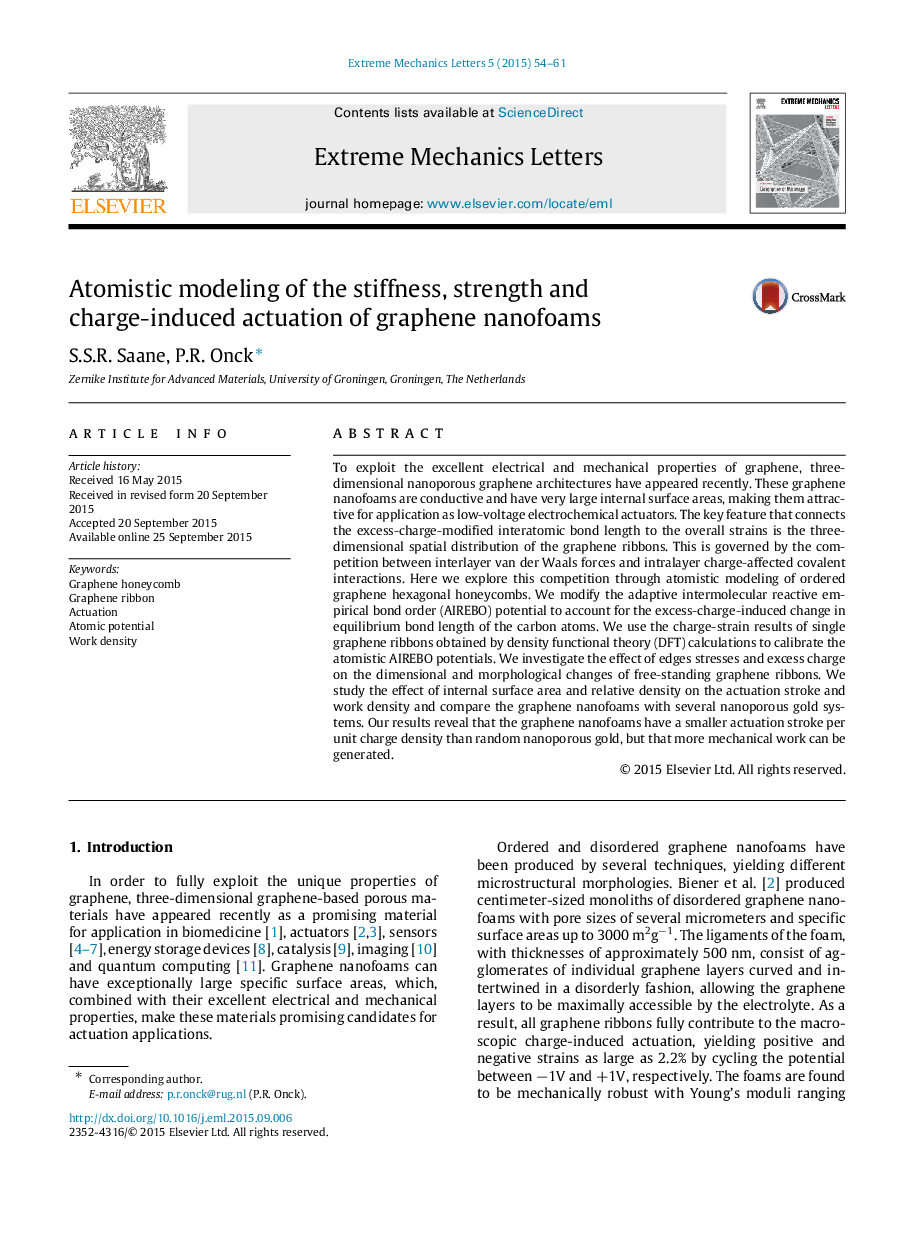| Article ID | Journal | Published Year | Pages | File Type |
|---|---|---|---|---|
| 774507 | Extreme Mechanics Letters | 2015 | 8 Pages |
To exploit the excellent electrical and mechanical properties of graphene, three-dimensional nanoporous graphene architectures have appeared recently. These graphene nanofoams are conductive and have very large internal surface areas, making them attractive for application as low-voltage electrochemical actuators. The key feature that connects the excess-charge-modified interatomic bond length to the overall strains is the three-dimensional spatial distribution of the graphene ribbons. This is governed by the competition between interlayer van der Waals forces and intralayer charge-affected covalent interactions. Here we explore this competition through atomistic modeling of ordered graphene hexagonal honeycombs. We modify the adaptive intermolecular reactive empirical bond order (AIREBO) potential to account for the excess-charge-induced change in equilibrium bond length of the carbon atoms. We use the charge-strain results of single graphene ribbons obtained by density functional theory (DFT) calculations to calibrate the atomistic AIREBO potentials. We investigate the effect of edges stresses and excess charge on the dimensional and morphological changes of free-standing graphene ribbons. We study the effect of internal surface area and relative density on the actuation stroke and work density and compare the graphene nanofoams with several nanoporous gold systems. Our results reveal that the graphene nanofoams have a smaller actuation stroke per unit charge density than random nanoporous gold, but that more mechanical work can be generated.
